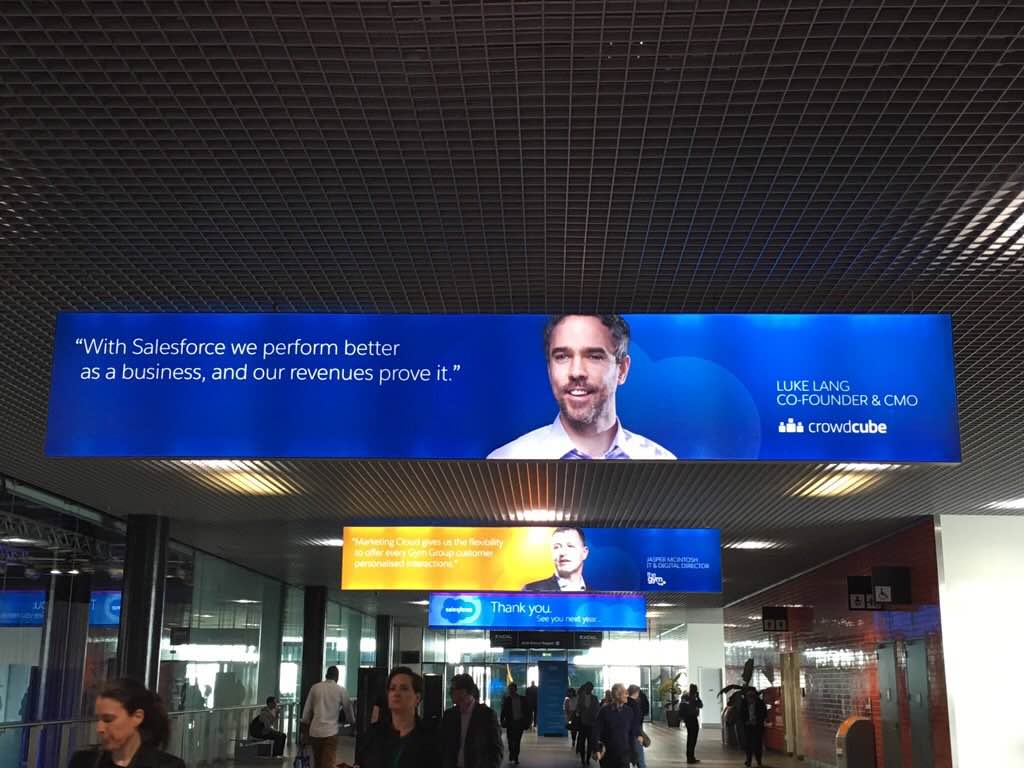
Platform Migrations & Operational Transformation
Consolidating internal products, processes and systems to reduce platform costs and increase scalability
Annual Cost Savings
Annual cost saving through consolidation
Separate Platforms
Number of platforms and tools consolidated into Salesforce
Sales Efficiency YoY
YoY increase in sales efficiency
"We need a transformation plan to solve scalability issues...visibility and understanding of what happens, when and why in our internal stack and customer facing product will be critical as we look to grow without increasing headcount.
"
The Challenge
Operational chaos was choking Europe's most active equity investor
After three years of explosive growth, Crowdcube was drowning in systems bloat and operational plasters. With 11 separate tools driving email communications alone and no central CRM deployed, the platform that had raised £1bn+ for 1,300 companies was struggling to scale efficiently. Growing pains had led to costly bolt-on solutions impacting growth and scalability, with mounting costs and technical debt that was becoming increasingly difficult to manage and maintain.
Systems Fragmentation
Eleven separate tools were being used across the marketplace to drive email communications with no central coordination or visibility
Escalating Technical Debt
Operational costs had reached £215k annually with bolt-on solutions creating scalability barriers and maintenance nightmares
Growth Bottlenecks
The fragmented tech stack was preventing the team from scaling operations without proportionally increasing headcount, halting sustainable growth

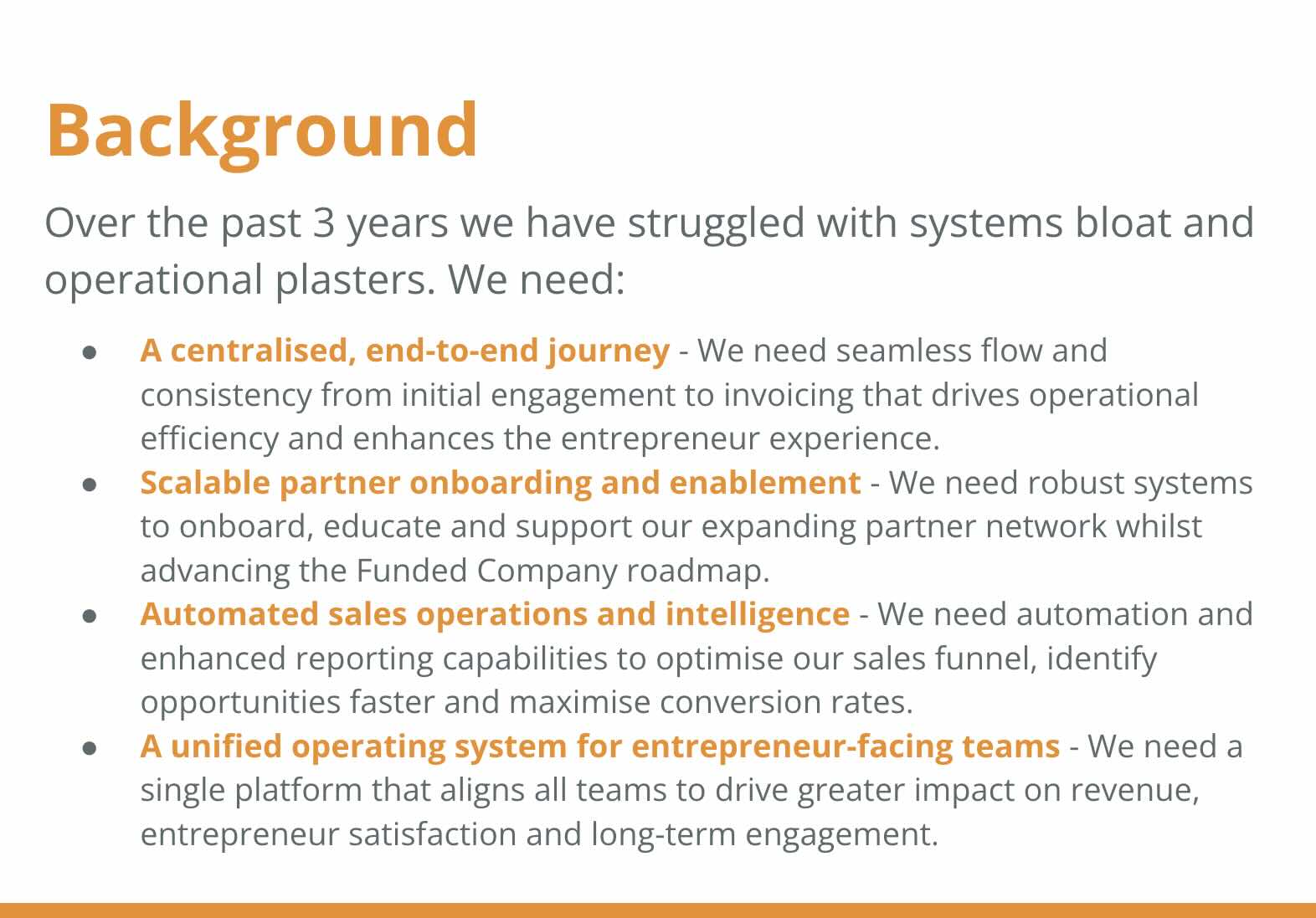

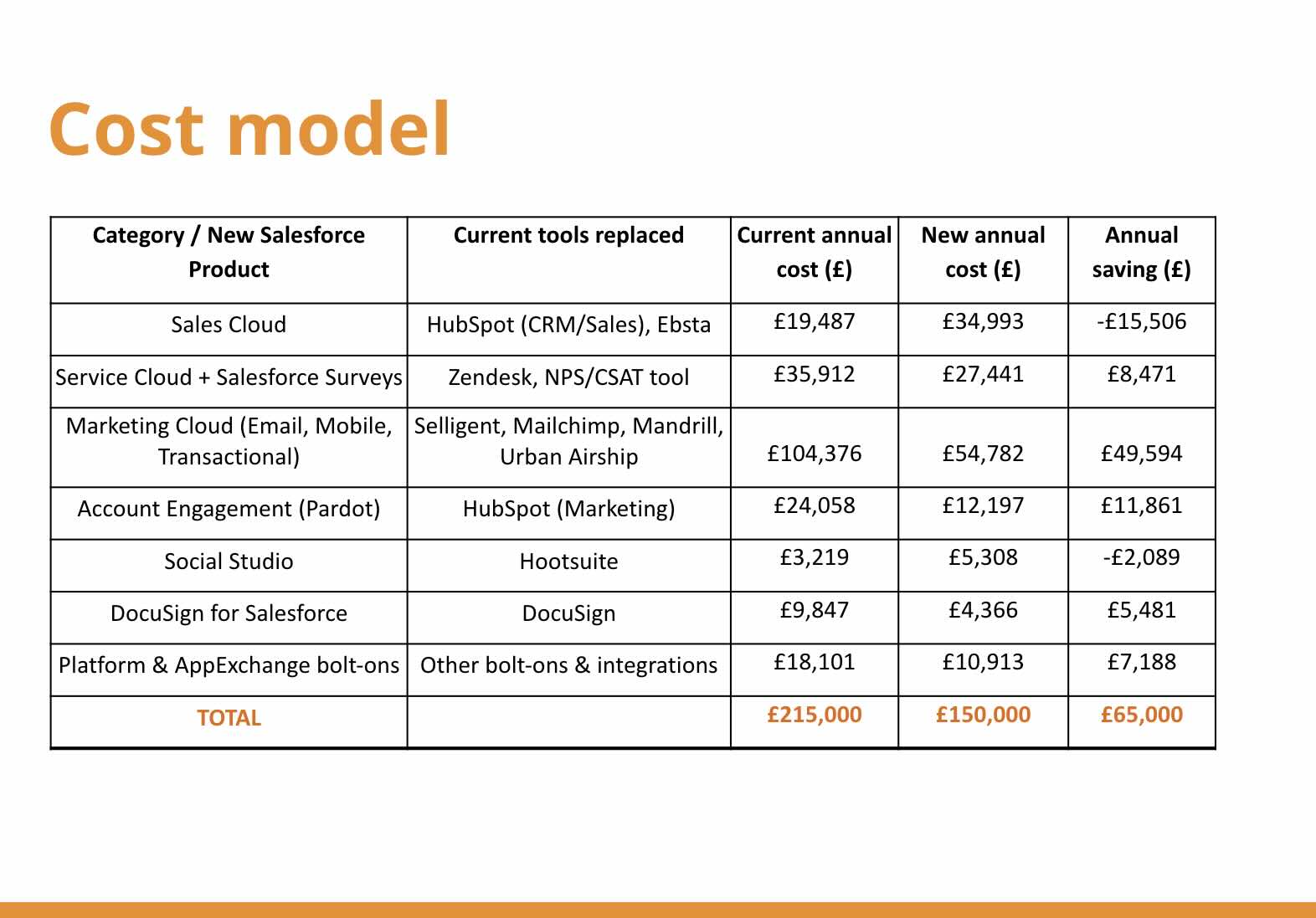
The Strategy
Centralised simplification through strategic platform consolidation
The strategy focused on implementing a unified technical stack centred around Salesforce to enable operational efficiency and master scalability. Rather than continue patching problems with more tools, we committed to a complete transformation that would centralise all customer touchpoints, automate manual processes, and provide end-to-end visibility across the entrepreneur journey whilst maintaining focus on entrepreneur happiness and experience.
Centralised Architecture
Migrate all systems to a unified Salesforce ecosystem to eliminate fragmentation and create single source of truth
Phased Implementation
Execute migration across multiple quarters to minimise disruption whilst maintaining business operations and regulatory compliance
Process Automation
Replace manual processes with automated workflows to enable scaling without proportional headcount increases
The Execution
A carefully orchestrated 9-month transformation journey
The execution followed a meticulously planned phased approach designed to minimise operational disruption whilst delivering maximum impact. Working across multiple quarters, we systematically migrated from fragmented legacy systems to a unified Salesforce architecture, ensuring each phase delivered immediate value whilst building towards the complete transformation vision.
Foundation & Planning (Q1 2018)
The first critical step involved comprehensive mapping of the existing data flow across all 11 tools and understanding the complex web of integrations that had evolved organically. We conducted detailed stakeholder interviews across Sales, Account Management, Marketing, Compliance, Finance and Completions teams to understand their specific needs and pain points.
This foundation work revealed the true scope of the challenge and enabled us to design a phased migration path that would maintain business continuity whilst delivering quick wins. We established clear success criteria and identified the critical path dependencies that would determine our implementation sequence.
"We need to be able to drive operational efficiency within the customer facing ecosystem and through the entrepreneur experience - using flow, consistency and a centralised approach."
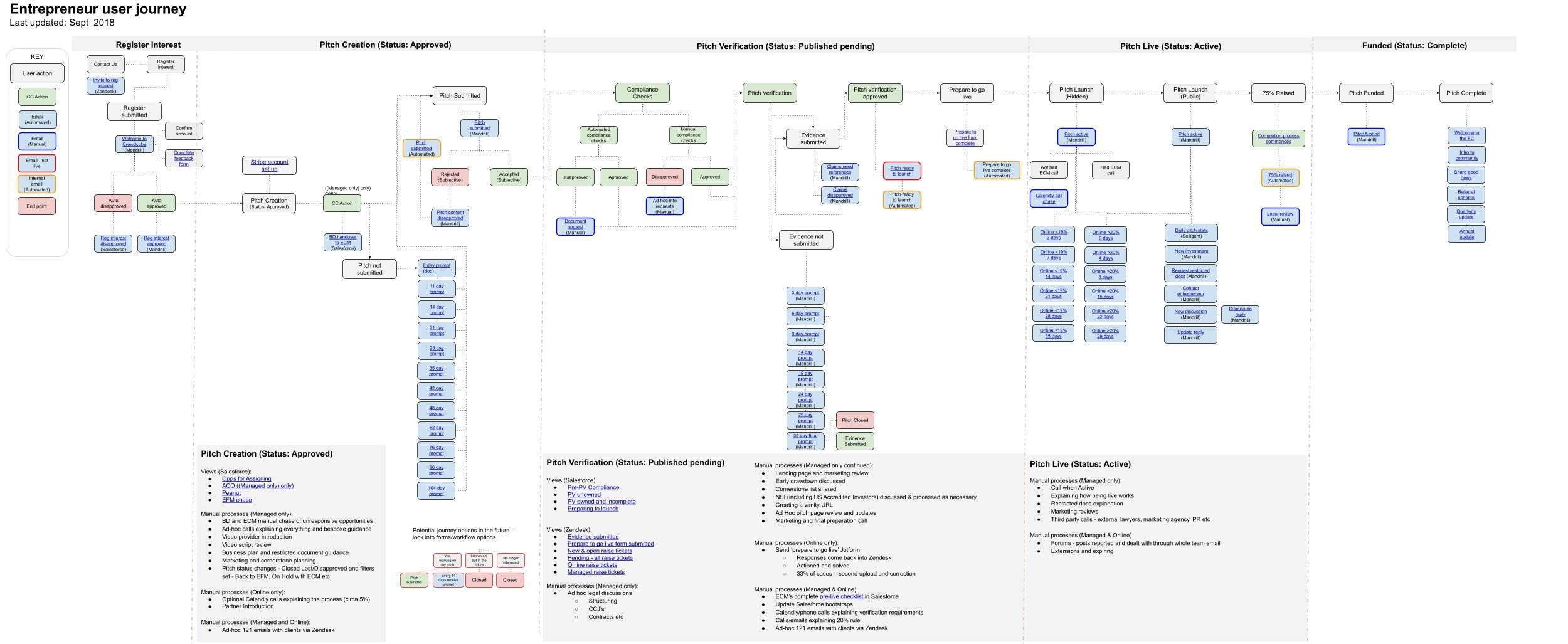
Customer Support Migration (Q1 2018)
The second phase focused on migrating our customer support infrastructure from Zendesk to Salesforce Service Cloud before the renewal deadline of 31st March 2018. This migration included moving all support cases, implementing NPS and CSAT tools, and training the customer facing teams on the new system.
We rebuilt the entrepreneur onboarding process and updated all automated email flows to work within the new architecture. This phase also involved moving all investor data into Salesforce to create a unified customer database that could support both sales and support functions seamlessly.
"This was quite the undertaking with a set deadline for delivery. We needed to be efficient and diplomatic with an effective change management plan."

Marketing Automation Overhaul (Q2 2018)
The third phase involved the complex migration from multiple email platforms (Selligent, Mailchimp, Urban Airship, Mandrill) to Salesforce Marketing Cloud. This created end-to-end visibility of customer communications and eliminated the fragmented approach that had developed over years of rapid growth and sticking plasters.
We systematically moved transactional emails, operational emails, and push notifications into the unified system whilst building comprehensive reporting capabilities. This phase required careful coordination with the product team to ensure all automated entrepreneur journey touchpoints remained functional throughout the transition.
"This provided clarity to all of the relevant teams of who has received what, when and why throughout the end-to-end customer journey.""

Final Integration & Optimisation (Q3 2018)
The final phase involved migrating social media management from Hootsuite to Salesforce Social Studio and conducting a comprehensive audit of all migrated processes. We focused on ensuring the new simplified architecture was delivering the promised operational efficiency gains and could support continued growth.
This phase included extensive team training, process documentation, and the establishment of ongoing governance to prevent future systems bloat. We implemented metrics and monitoring to maintain the simplified approach and ensure continued focus on impact, scalability, and growth.
"Audit and ongoing reviews meant that implemented processes maintained simplification, continued to improve and ensured we were focusing on impact, scalability and growth."
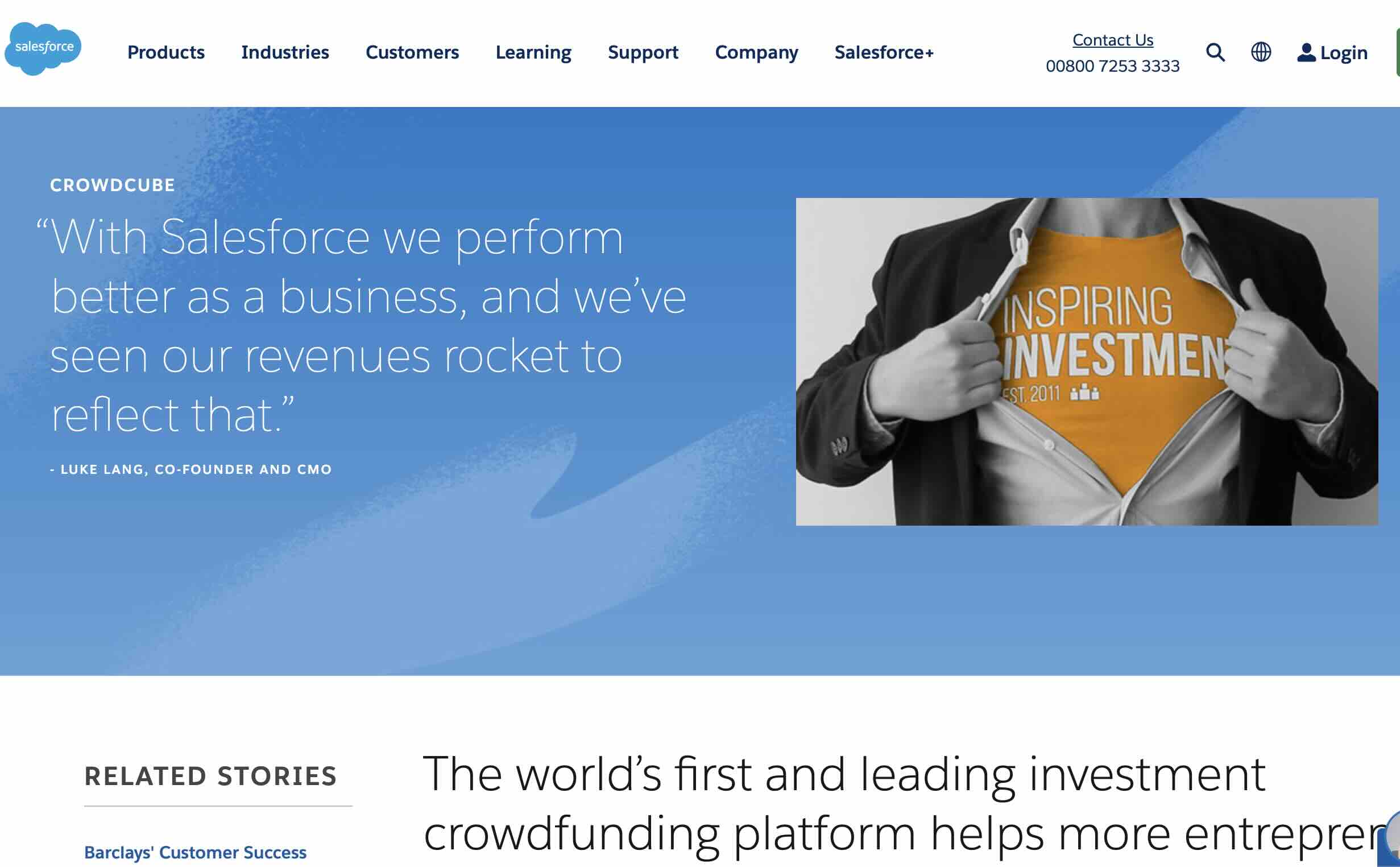
The Results
Operational transformation delivering sustainable competitive advantage
The platform migration delivered transformational results across cost efficiency, operational effectiveness, and scalability metrics. By centralising the technology stack and eliminating systems fragmentation, we created a foundation that could support continued rapid growth whilst improving rather than compromising operational efficiency. The unified architecture provided unprecedented visibility into customer journeys and enabled data-driven optimisation across all customer touch-points.
Annual Cost Savings
Reduced operational stack costs from £215k to £150k through consolidation
Platform Consolidation
Eliminated 11 separate tools in favour of unified Salesforce ecosystem
Sales Efficiency Increase
Year-on-year improvement through integrated customer funnel
Fundraises Delivered
Record number of revenue opportunities achieved in 2018 during migration period
Revenue Growth
Year-on-year growth throughout transformation period
System Uptime
Almost zero business disruption during 9 month migration process
Learnings & Reflections
Strategic insights from leading operational transformation at scale
Leading this transformation while maintaining record business performance taught me invaluable lessons about managing complexity, stakeholder alignment, and strategic execution under pressure. I'd like to say it all went perfectly but that's far from true. The project demonstrated that with proper planning and phased execution, even the most complex operational transformations can be achieved without compromising business momentum. However, in the earliest phase we struggled to get the all the stakeholders on board. Once this changed, by actively involving them, the tide changed. The end product was far superior and reinforced that sustainable scale requires deliberate architectural decisions rather than reactive bolt-on solutions. Tackling process debt before it sets root is a far easier than unpicking it later.
Stakeholder-Centric Design
Success requires full stakeholder engagement and depends on deep understanding of how different teams actually use systems, not just what they say they need
Scale vs. Complexity Trade-off
True scalability feeds from architectural simplicity. Questioning why something is being used and testing what would happen if it was removed showed what was necessary vs nice to have
Phased Migrations & Agile Deployment
Complex system transformations require carefully but rapidly sequenced phases that deliver immediate value and allow for constant feedback and improvement